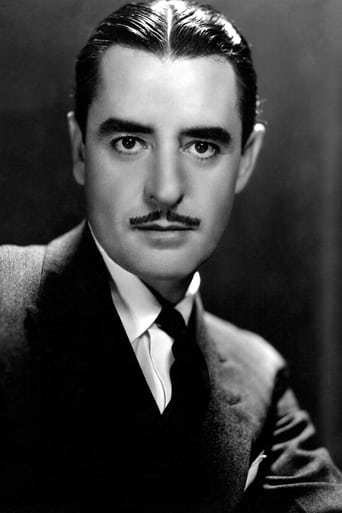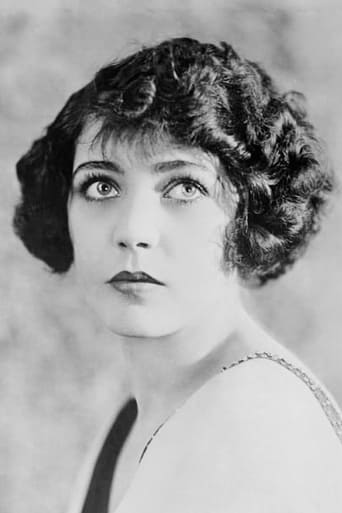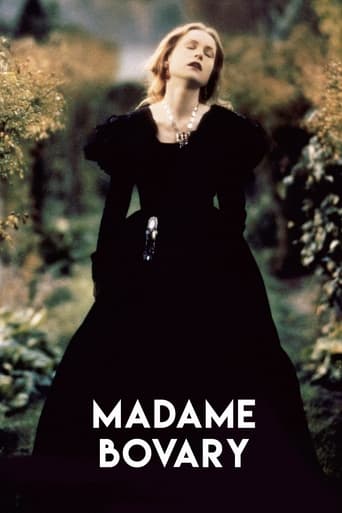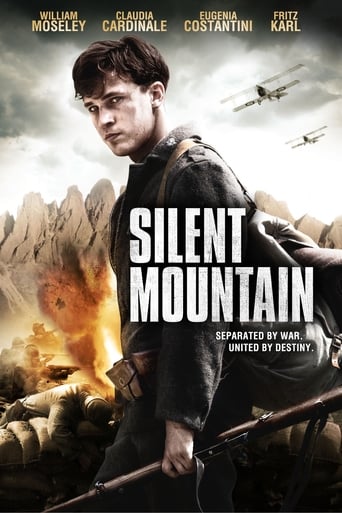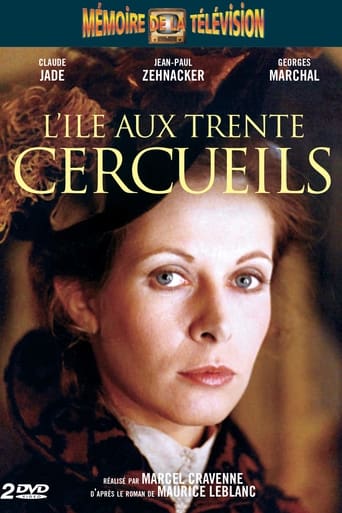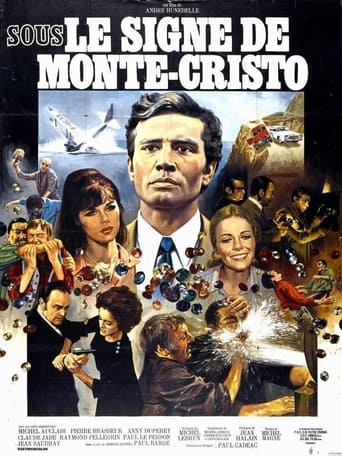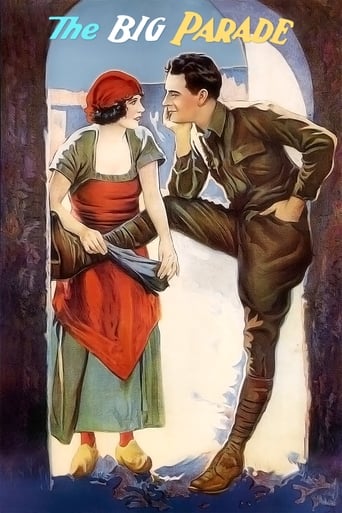
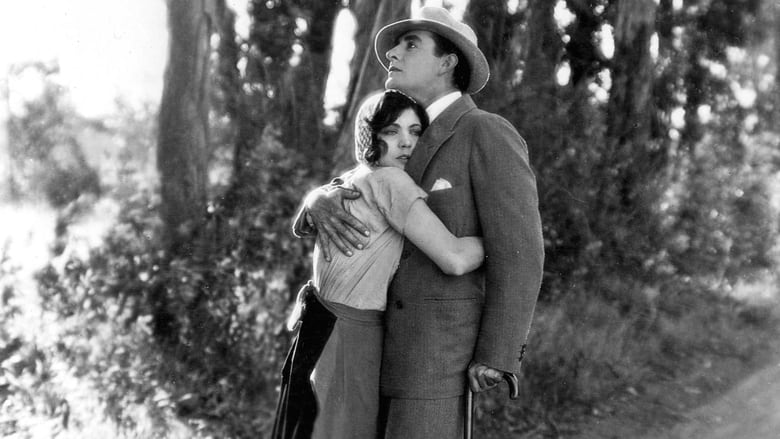
The Big Parade (1925)
The story of an idle rich boy who joins the US Army's Rainbow Division and is sent to France to fight in World War I, becomes friends with two working class men, experiences the horrors of trench warfare, and finds love with a French girl.
Watch Trailer
Cast
Similar titles
Reviews
Best movie of this year hands down!
From my favorite movies..
Expected more
Awesome Movie
"You'll look gorgeous in an officer's uniform. I'll love you even more then." Justyn Reed (Claire Adams) to Jim Apperson (John Gilbert)For me, this is one of the most significant lines in this very, very "big" movie. Contrast these silly and superficial words against Justyn's disgusted reaction to the sight of a seriously disabled Jim when he returns from the war. This contrast from the beginning to the end of the movie summarizes its very serious and somber message about the unrealistic glorification of war as it compares with the very real experience of those who are called upon to do the actual fighting. As Jim endures the horrors of battle, Justyn doesn't even wait for his return before she takes a passionate interest in his own, nerdy brother, of all people.More than any other silent director, King Vidor's exceptional work in both this picture and "The Crowd" succeeded to awaken my appreciation to the very special beauty and value of the silent film. I can't say that all silent films are of this caliber, but, after so many years and so many technological advances in the movie business, they both maintain their viewing appeal and their relevance to our lives.The battle scenes rank among the most impressive portrayals of combat that I have witnessed on film and are the successful results of painstaking efforts not only by director Vidor but of the uncredited MGM production manager, Irving Thalberg. While they are not as graphic as such modern films as "Saving Private Ryan", they nevertheless strongly convey the nearly impossible challenges of serving on the front lines of physical conflict. Beyond these striking battle scenes, so far ahead of their time, I was very moved by the scene of Jim with his parents, played by Claire McDowell and Hobart Bosworth. I don't believe that this scene would have been as potent without the outstanding directing ability of Vidor. Also, the image of Mrs. Apperson standing at the front door as her son departs for war in a faraway land depicts the pain and torment of all mothers in this dreaded predicament as well as any that I have ever seen, and it will linger in my mind for a very long time.Although the first 75 minutes could have been shortened, I believe that the director wanted to develop the human characters of the three central soldiers as fully as he possibly could, and the result is that the viewer even more strongly empathizes with them and their excruciating circumstances on the battlefield. The growth and transition of Jim Apperson's character during the course of the film is a remarkable achievement by both Vidor, the director, and Gilbert, the actor. The performance of Renee Adoree as Melisande is delightful, and I regret that her film career was so tragically cut short as the result of her fatal illness at age 35. While some reviewers disliked Karl Dane's performance as Slim, I found him to be a very likable personification of Disney's Goofy who is suddenly placed in the midst of a major war, facing it with admirable, almost inhuman, bravery and fearlessness. Slim, even as a humanized Goofy, is the one you want with you in a foxhole. He is man's fearless, loyal, and best friend.The 1988 musical score of Carl Davis contributes significantly to the emotional impact, successfully communicating what spoken dialogue obviously cannot achieve in a silent movie. This is one silent movie that will hopefully enhance an appreciation for this very important era of film-making in other viewers as it did for me.
. . . are three of the floats I noticed in director King Vidor's bizarre BIG PARADE. How many war flicks take 88 minutes to get to the Front? At the center of this movie is the longest lovers' goodbye in film history. As the composer of the 1988 score goes berserk with clashing musical motifs and a crescendo of dissonant chords, Doughboy Jim stretches out a parting already surpassing marathon length by throwing stuff at his French peasant gal lover Melisande. When Jim runs out of traditional Forget-Me-Nots, he flings her his left boot (foreshadowing, of course, the flick's lame finale). WWII may have given rise to NO TIME FOR SERGEANTS, but it's the corporals who are the doomed Short-Termers on PARADE. Cigarettes famously earned their "coffin nails" nickname during WWI. In one of the most literal takes on product placement ever, Mr. Vidor has Jim offer his German P.O.W. a smoke near the end of THE BIG PARADE. Naturally, the enemy soldier drops dead a few moments later!
A gritty silent era war movie.Quite realistic for its time. Certainly doesn't glamorise war, unlike many other movies of that period would. I wouldn't go so far as to say it is an anti-war movie, but it certainly doesn't paint a glorious picture of war.Not all good: the movie drifted in the middle. The escapades of the soldiers while in the camp in France seemed quite silly and just delayed the inevitable battle scenes.The over-dramatic nature of silent movies also means this hasn't aged that well. The overly stereotypical characterisations of some of the soldiers, especially the hick building construction worker, was a bit over-the-top.At the time of its release, however, it was probably revolutionary, and highly regarded.
THE BIG PARADE was written by Laurence Stallings, a veteran of World War I. In his autobiography, director King Vidor wrote that he was tired of laboring for months on a feature only to see it play for one week in theaters. So in 1924 he asked M-G-M's head of production, Irving Thalberg for the opportunity to make a "serious" picture that would have legs. Thalberg was convinced that good art and good box office were not necessarily incompatible and the men began to search for an appropriate war story. When Stallings' play WHAT PRICE GLORY? caught Thalberg's attention, the writer was hired.THE BIG PARADE was first designed as a modest programmer concerning one young man's disillusionment in the face of war. When the MGM executives took a look at the rushes, they gave Vidor the go-ahead to film an all-out "spectacular", which ended up running 13 reels and costing a then-astronomical $382,000. It returned 5 million dollars in the days when tickets averaged less than $.25 each.There had been war films before it but Vidor wanted to capture the human dimension behind war from a grunt's point of view. Like Vidor's other masterpiece THE CROWD it shares his philosophy that we are basically anonymous and anti-heroic our destinies determined by events out of our control.The film opens on three young men from different walks of life: a Bowery bartender, Tom O'Brien as Bull; a gawky ironworker Karl Dane as Slim; and a rich man's son, John Gilbert as James or Jimmy. Where the story differs from wartime propaganda is seen in its careful attention to each individuals humanity.The first half of the film is taken up with the horsing around between the army buddies and a young French woman they meet played by Renee Adoree. Their experiences billeting in France are at first light-hearted. There was even some controversy at the time that lip readers could make out actual curse words actors used and later versions had some shots shortened to prevent offending viewers.Gilbert woos the beautiful village girl who looks just like his fiancé back home. Scenes between Gilbert and Adoree, as he shyly flirts and she shyly retreats, made the most of Gilbert's flair for understated acting.The second half of the film gives way to the shocking reality of the horrors of war.The film's many highlights include: the gum chewing lesson (something Vidor claimed he improvised on the set to add a more human dimension); then there is the famous shot of Adoree not letting go of Gilbert as he and his fellow soldiers march to the front with the endless straight-line of hundreds of trucks suggesting the endless amount of supplies and men, the big parade if you will marching off the end of the world.Vidor prepared himself for the subject by screening documentary films made by the U. S. Army Signal Corps during World War I. When viewing footage of a group of soldiers solemnly escorting a funeral cortege, Vidor was inspired to choreograph the filming of the American forces' march through Belleau Wood to the beat of a metronome amplified by a bass drum to heighten the sense of foreboding and death.Sound was used to emotional effect during the film's remarkably successful 2 year run (a little longer than the usual one week run) at New York's Astor Theatre on Broadway, where eighteen men with bugles and wagons filled with iron created sound effects to replicate the experience of actual battle.New York Times placed The Big Parade at the top of its list of best films for 1925, praising it as "the top-notch photoplay of the year" and "unusually original in detail." The Variety review called it "the best of the war pictures" and praised John Gilbert's performance as "superb" and a "triumph for director King Vidor." War films today are usually copies of earlier films influenced by this original, I invite you to see it through those innocent eyes. As if you had never seen a war film and had just walked into a theater in 1925 . . .
